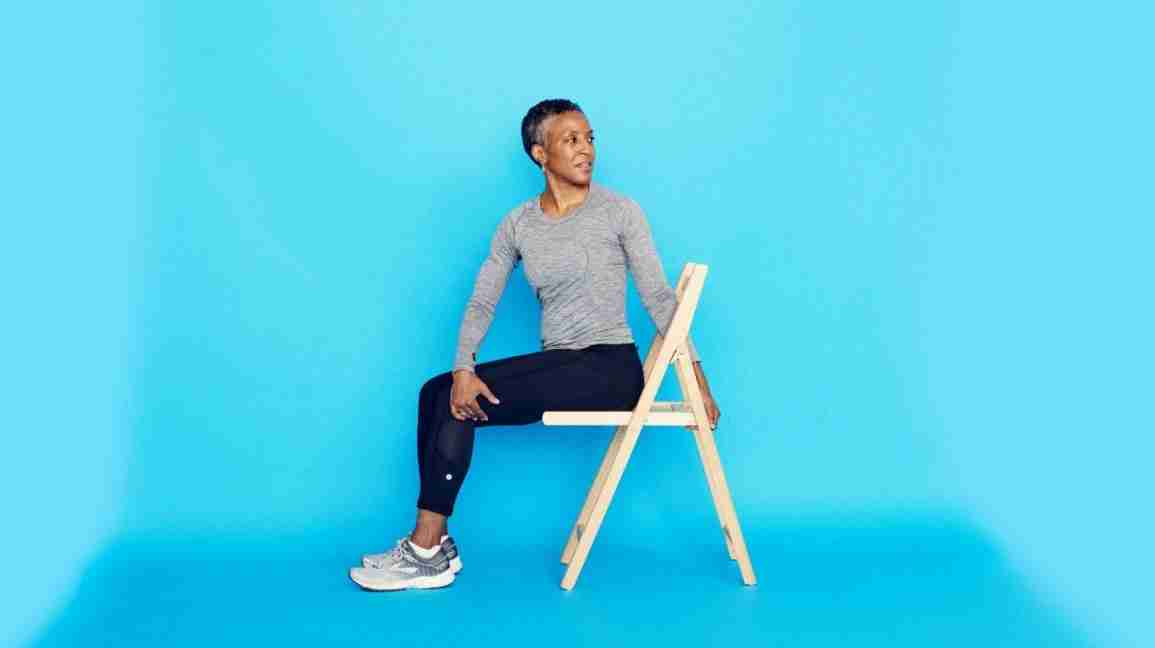People with rheumatoid arthritis (RA) are often searching for new ways to reduce pain and keep their joints mobile.
Enter: Yoga.
Yoga has been
The benefits of yoga for people with RA
1. It can change how you deal with pain
“The biggest benefit of practicing yoga while living with RA is how it changes pain,” says Christa Fairbrother, a yoga teacher who specializes in working with people with arthritis, who lives with RA herself. “It reduces your perceptions of pain and improves your ability to deal with your pain.”
2. It can help to reduce inflammation
Practicing yoga has been shown to help reduce stress and its physical manifestations — aggravated pain or a relapse.
“Decreasing stressful feelings and emotional reactions to stress lowers levels of cortisol, the main human stress hormone,” explains Carrie Janiski, DO, a yoga teacher and the director of sports and musculoskeletal medicine at Romeo Medical Clinic in Turlock, CA. “This has a positive impact on levels of inflammation throughout the body, including joints that are affected by RA.”
3. It improves flexibility and range of motion in joints
“Patients with RA may struggle with decreased joint range of motion, swollen and painful joints, significant early-morning stiffness, and difficulty performing everyday activities with their hands,” Janiski shares.
“Yoga can assist with symptoms from RA, as it helps combat some of these issues and preserve current function.”
4. It’s accessible
Though you might associate yoga with images of gravity-defying poses, you don’t need to do those to get the benefits of the practice.
“Yoga isn’t just about performing physical asana, also known as postures,” states Stacey Pierce-Talsma, DO, chair of the osteopathic manipulative medicine department at Touro University California College of Osteopathic Medicine.
“Yoga is simply breath with movement and awareness,” Dr. Pierce-Talsma says. “This could look as accessible as sitting comfortably in a chair, resting your hands on your abdomen, and observing your breathing.”
Beginner tips for easing into yoga
Well Tested: Gentle Yoga
People with mobility issues are sometimes apprehensive about taking up a new physical activity. Here’s what experts have to say about how to get started comfortably:
Start when you’re not having an active flare
“A new thing is always easier to tackle when you have less on your plate,” Fairbrother points out.
You don’t necessarily need to feel the best you’ve ever felt to get started — but it’s a good idea to wait until you’re feeling at least okay before trying yoga for the first time.
Ask around to find the right teacher or class
“If you belong to your local arthritis support group, ask them if they go to a yoga class and who they would recommend,” Fairbrother suggests. “If you have a friend or family member that deals with a chronic health condition, ask them. You want to find a yoga teacher or yoga therapist who is comfortable and competent in working with people of a variety of abilities.”
If you can’t find someone by asking around, try internet resources such as the Accessible Yoga Network or Yoga for Arthritis to search for a teacher in your area.
Talk to the instructor
“Before you go to class, touch base with the instructor and explain your needs,” Fairbrother recommends. “They’ll let you know if their class is right for you or make suggestions for something different.”
Talk to your doctor first
“If you have RA, be sure to talk to your doctor before beginning a yoga practice,” Dr. Janiski says. “They may [be] able to make recommendations about movements you should or should not perform.”
Remember: Only do what you can
“Always listen to your body — which is your biggest teacher,” Dr. Janiski says. “Don’t try to push too hard. That’s how people get injured in yoga.”
Fairbrother agrees, noting that “there are many postures, meditations, and breathing practices in yoga, so choose the ones that don’t make your RA worse. Yoga is effort and if your muscles are a bit sore the next day, that’s okay. If you’re sore more than 24 hours later, you overdid it and should back off next time.”
You shouldn’t feel joint pain from yoga, she adds. So if you do, that could also be a sign that you’re pushing yourself too hard.
5 gentle poses to try
If you feel up to it, you can also get started with some very gentle yoga poses at home. Here are five of Packard and Fairbrother’s favorite poses to try, even when you’re not feeling your best.
1. Hand yoga
- Start by making fists with your hands, and then extend all the fingers straight out at the same time.
- Transition into clenching and unclenching one finger at a time, so your hand makes a wave motion as it opens and closes.
- Continue opening and closing your hands while starting to circle your wrists. Can you open and close your hands and circle the wrists in both directions? Test yourself!
- Keep the movement going, but now open your arms out to the side so you can roll your arms all the way up to your shoulders.
Do what feels good. “This is very much an interpretative arm dance, and there’s no right or wrong way to do it,” Fairbrother says.
2. Foot yoga
- While seated in a chair, begin to rock your feet forward and back, coming up on your toes and back onto your heels.
- When you rock back onto your heels, hold for a count of 3 and then rock again.
- Next, curl your toes in one at a time, like you’re trying to pick something off the floor, then release.
- This shouldn’t make your feet cramp, so if it is, back off a little.
3. Seated twist
- Sitting comfortably, lengthen through the crown of your head, up to the ceiling.
- Take one hand behind you and the other hand to your opposite knee.
- Inhale, and with an exhale, engage your belly while turning toward the hand behind you.
- Stay here for a breath. With your next exhale, return to center.
- Repeat on the other side.
4. Shoulder and neck soother
- While seated, inhale and lengthen through the crown of your head.
- Tuck your chin slightly in toward your throat. Exhale and look any amount over your right shoulder (whatever’s comfortable).
- Inhale back to center, then exhale and look over your left shoulder.
- Inhale back to center. Next, exhale and drop your right ear down toward your right shoulder.
- Inhale back up to center, exhale, and drop your left ear toward your left shoulder.
5. Modified downward-facing dog
- Place your hands on a chair or a table that’s at waist-height or lower.
- Step back so that your arms are extended and your hips are over your ankles.
- If you feel well enough, you can explore this position by engaging your belly, pressing down into the balls of your feet, while reaching through your heels.
- If comfortable, press your hands down into the chair or table to engage the muscles around the shoulder blades.
- Stay here and breathe. Pay attention to the way your breath feels in this position.

